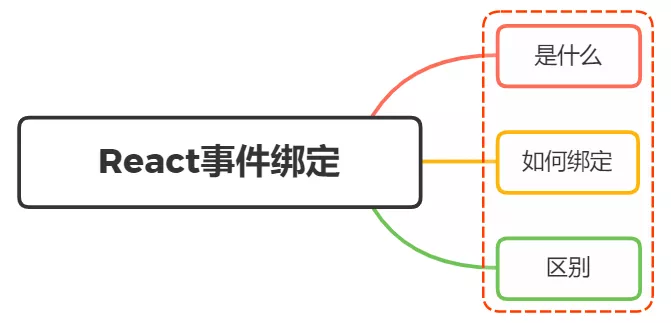
在react应用中,事件名都是用小驼峰格式进行书写,例如onclick要改写成onClick
最简单的事件绑定如下:
class ShowAlert extends React.Component { showAlert() { console.log("Hi"); } render() { return <button onClick={this.showAlert}>show</button>; } }
从上面可以看到,事件绑定的方法需要使用{}包住
上述的代码看似没有问题,但是当将处理函数输出代码换成console.log(this)的时候,点击按钮,则会发现控制台输出undefined
为了解决上面正确输出this的问题,常见的绑定方式有如下:
如果使用一个类组件,在其中给某个组件/元素一个onClick属性,它现在并会自定绑定其this到当前组件,解决这个问题的方法是在事件函数后使用.bind(this)将this绑定到当前组件中
class App extends React.Component { handleClick() { console.log(‘this > ‘, this); } render() { return ( <div onClick={this.handleClick.bind(this)}>test</div> ) } }
这种方式在组件每次render渲染的时候,都会重新进行bind的操作,影响性能
通过ES6的上下文来将this的指向绑定给当前组件,同样在每一次render的时候都会生成新的方法,影响性能
class App extends React.Component { handleClick() { console.log(‘this > ‘, this); } render() { return ( <div onClick={e => this.handleClick(e)}>test</div> ) } }
在constructor中预先bind当前组件,可以避免在render操作中重复绑定
class App extends React.Component { constructor(props) { super(props); this.handleClick = this.handleClick.bind(this); } handleClick() { console.log(‘this > ‘, this); } render() { return ( <div onClick={this.handleClick}>test</div> ) } }
跟上述方式三一样,能够避免在render操作中重复绑定,实现也非常的简单,如下:
class App extends React.Component { constructor(props) { super(props); } handleClick = () => { console.log(‘this > ‘, this); } render() { return ( <div onClick={this.handleClick}>test</div> ) } }
上述四种方法的方式,区别主要如下:
综合上述,方式四是最优的事件绑定方式
原文:https://www.cnblogs.com/houxianzhou/p/15048659.html